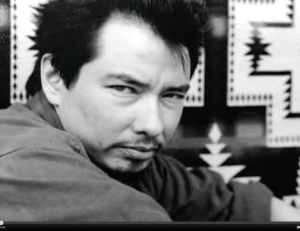Gendernauts is a documentary created by Monika Treut in 1999. The film focuses on several gender nonconforming people. All the people represented – Susan Striker, Texas Tomboy, Annie Sprinkle, Max Wolf Valerio, Jordy Jones, Stafford, Tornado, Hida Viloria – live in San Francisco, California which is reputably open-minded about gender diversity. Sandy Stone narrates the documentary, walking the viewer through questions of what defines gender and what happens when the people break the perception of the gender binary. Using the rubric from class, this film succeeds in areas such as who to interview but fails in other areas like the quality of some of the interviews. The topic by nature is fascinating to learn. However, the low quality of parts within the film detracts from the overall impression.
I found helpful that the documentary used still images while using a voice over to describing the transforming of the gentlemen. They used many photos in a timeline to show the change overtime. The way it was done is also helpful for the viewer as well because as the interviewer spoke about their change, the slideshow matches the right moment the person spoke about. It was a perfect match that created a powerful tool which made it easy for people to follow along and almost put themselves in the shoes of the transgender individual.
This interview is well done from the start, when Sandy introduces how she met Susan Striker. Susan is placed slightly off-center so it does not appear she’s staring dead-straight into the camera, yet the camera is behind Sandy so the angle is optimal. The location is also a positive attribute for this interview – the home setting and body language is appropriate for the tone of the documentary, but not so casual it detracts from the information. The cut-away is placed effectively as it shows the skyline of San Francisco while Susan talks about the city.
This scene was not helpful for the film. Important information about what it means to have sex as a transgender male was not captured well in this scene because there was too much going on in the film at this point. There is a fire truck that draws attention from the viewer, so it’s hard to keep one’s eyes focused on the person. Another big issue is sound, for example, then there is a lot of background noise such as cars, people talking and city noise. These sounds overpower the voice of the person being interviewed, and as a result, the important information of this scene is washed out.
This scene of the man walking down the street is great a cutaway scene and works well with the transition of the film. It keeps the attention of viewer as it transitions from scene without being boring. It makes the film flow well and always as something for viewers to look at without losing the attention. It also shows how pride the men walks in his body in public. It speaks to the importance of the man feeling like he is right body.
This scene is supposed to demonstrate how transgender people inject their hormones every other week. The main issue of this skit is it fails to connect clearly to its purpose. For viewers unclear about life as a transgender person especially, this scene does not explain the hormone therapy. It appears the scene was included because the people wanted it in the film, but not because it fit well into the flow of the narration.
Having multiple interviews offered different perspectives and experiences that portrayed well the lives of people in San Francisco that don’t conform to the gender binary. Minor details of background and content detracted from the overall message of the documentary. Although the purpose of the documentary was clear, choice of content was not always effectively used. Overall, the documentary was more informal than professional. Transitions between scenes were at times abrupt and not very logical. For example, the scene with the the injection of hormones. There was a combination of well conducted interviews and poorly thought out conducted interviews. The setting of interviews proved to be an important factor to consider. Interviews with a minimal amount of activity in the background were easier to follow whereas busy scenes with a lot of sounds took the focus away from the interviewee.






